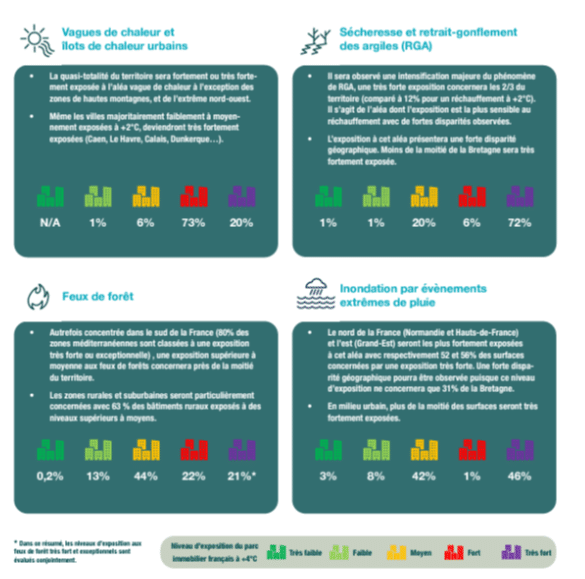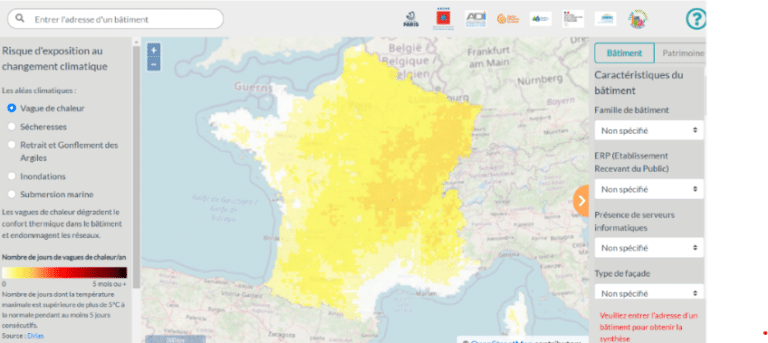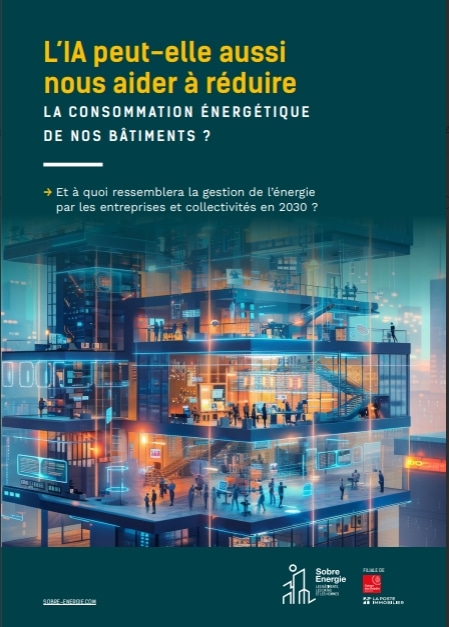This is one of the blind spots in climate strategy. If the climate change mitigation aspect is at the heart of the challenges facing real estate decision-makers with the decarbonization strategy linked to recent regulations (APER law on renewable energies, LOM law on mobility and Tertiary Eco Energy Decree).
The adaptation of buildings in general and the tertiary sector in particular to the impacts of climate change is much less advanced in France.
Mitigation and adaptation, two sides of the same coin
Define mitigation and adaptation
At a time when the temperature on earth has already increased by +1.2°C since the pre-industrial period, acting in the face of climate change requires carrying out 2 actions simultaneously:
Mitigate to reduce the causes of climate change in the medium/long term and overall therefore avoid the unmanageable.
Adapt to reduce the impacts already visible in the short term and locally and therefore manage the inevitable.
The Intergovernmental Panel on Climate Change (IPCC) gives the following definitions of the two terms:
Climate change mitigation: “Human intervention aimed at reducing the sources or enhancing the sinks of greenhouse gases.”
Adaptation to climate change: “For human systems, process of adjustment to the current or expected climate as well as its consequences, so as to mitigate its harmful effects and exploit its beneficial effects. For natural systems, process of adjustment to the current climate as well as its consequences; human intervention can facilitate adaptation to the expected climate and its consequences”
Adaptation issues in France
Europe, and in particular France, are warming at a faster rate than the global average. The IPCC and Météo France estimate that, while the planet is heading towards an increase of +3°C at the end of the century, France could reach +4°C by 2100.
To coordinate its national adaptation strategy, France has adopted a National Plan for Adaptation to Climate Change (PNACC) which provides for progressive planning, with the implementation of measures by 2030, 2050 and 2100. The 3rd plan, PNACC3 was submitted for consultation in October and is outlined in 5 axes:
- protect the French;
- ensure the resilience of territories, infrastructure and essential services;
- adapt human activities;
- protect natural and cultural heritage;
- mobilize the nation's vital forces to successfully adapt to climate change.
Which tertiary real estate at +4°C?
Major risks
With 44% of final energy consumption and 16% of Greenhouse Gas (GHG) emissions, the building sector is strategic for successfully mitigating climate change and achieving carbon neutrality by 2050, like the France committed to this through the Paris Agreement in 2015.
In terms of adaptation too, in a France at +4°C, the building sector is particularly at risk on 4 levels:
- heat waves and urban heat islands
- Forest fires
- Dryness and swelling shrinkage of clays (RGA)
- Extreme flooding and rain
Buildings will become uncomfortable, even uninhabitable, as shown in a recent study on the exposure to climate change of buildings by the Sustainable Real Estate Observatory (OID).

“The real estate sector is already very impacted and buildings are expected to suffer more damage: the average amount of losses linked to natural disasters of 2.4 billion euros per year over the period 1989-2019 could increase to 4.6 billion euros. 'euros per year between 2020 and 2050.' (France Stratégie, 2023)
The issue of summer comfort in schools
Extreme heat is the main climatic risk to which school structures, often old buildings and very energy-intensive, are exposed. And this, especially since the heat reduces students' ability to concentrate and learn and can threaten the health of young people.
The challenge for these buildings is to begin energy renovation work, in order to improve summer comfort for students.
As part of its EduRénov program, the Banque des Territoires finances energy audits and the energy renovation of communities. Objective: 10,000 schools renovated by 2027.
Sobre Energie is an official partner of the program for carrying out audits.
How to assess your vulnerability?
Based on reference data from the IPCC, Cerema, BRGM and Météo France scenarios, the BAT-Adapt platform provides an analysis of the major risks in each territory, as well as the most affected equipment.

